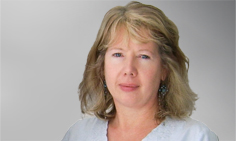THE white, ragdoll like, compressed bandaged legs held little resemblance to those of the person whom I knew was my mother. Nor did her jerky movements, nor her descriptions of what she was seeing. Nor, indeed, did her physical appearance resemble her.
This is the legacy of classic Creutzfeldt–Jakob disease (cCJD).
As medical practitioners will well know, but at that time I did not, the presentation of cCJD can take various forms. Reading an analysis to characterise the clinical, diagnostic and molecular features of five sporadic CJD variants raises many difficult memories for me.
I had initially brushed off my mother’s complaints of sleep problems and admonished her to be more careful because she seemed to fall often, but did not get really worried until I saw her newly childlike face look at me with the beginning of her dementia.
A tentative diagnosis did not come until she was unable to swallow. Beside myself with distress, I waited with my family for her death. The wait was accompanied by urgent discussion about autopsy.
Not only is there the death of a family member, but there is the lead-up to the death, often with multiple, sequential, conflicting diagnoses as different symptoms emerge.
Fortunately, my mother was spared early psychiatric symptoms and associated psychiatric ward admissions and interventions that — as the federally funded CJD Support Group describes — can anger relatives.
Death from cCJD is not easy for a family to experience. The physical and cognitive changes in the cCJD patient are rapid and difficult to reconcile with the person you knew.
Family members may be traumatised by this lived experience, which often begins by doing the rounds of doctors trying to get a diagnosis.
Families have to cope with increasing anxiety about the loved one’s rapid deterioration. And then, with a tentative diagnosis, comes dealing with the deadly nature of cCJD.
I have to live with the thought that my mother went into her grave in a biohazard bag. All relatives have different triggering memories.
Then there is the knowledge that not only did the patient have cCJD, but that, in fact, the patient’s first- and second-degree relatives are now different. They have entered into a community where it is common to be researched.
They also find they are under surveillance and may face discrimination when accessing health care, including needed surgery, because of infection control issues. Assessment is required to be eligible to give blood or donate organs.
Issues of genetic testing arise. Complex family dynamics may be animated at this time. Genetic testing is required to give definitive answers to families but perhaps not knowing is better for some? Both choices have implications.
As a surveilled population, family members are subject to complex federal and state law. As CJD is a human form of transmissible spongiform encephalopathies (TSE), the federal government has contracted the Australian National CJD Registry to determine all suspect cases of TSE in Australia as all states and territories have declared CJD as a notifiable disease, making surveillance of the disease compulsory. This can mean families are caught between federal requirements and their own state laws.
Disappointingly, the bioethical literature is sparse concerning infectious diseases, so the difference between the practice of surveillance and practice of research is currently blurred. Work needs to be urgently done to clarify this area.
Given this complexity nothing is simple or straightforward for families trying to move forwards. It can also trigger memories of cCJD and fears for oneself and for loved ones. The CJD Support Group is invaluable as it supports and advocates for families as issues emerge.
As a person who has lived with surveillance and who has also been a health researcher, I can attest to the significant experiential difference. It is important that medical practitioners realise the considerable legal complexity and social concerns confronting families and be mindful of these when treating cCJD family members.
When medical practitioners are treating family members of a person who has died from cCJD they are treating a population with a complex array of psychosocial andlegal issues that continue long after the death of the cCJD patient.
These will need to be dealt with as they arise over the lifetime of the cCJD family member.
Dr Geraldene Mackay (PhD) is a clinical mental health social worker and a member of the Australian College of Social Work Clinical Division.

 more_vert
more_vert